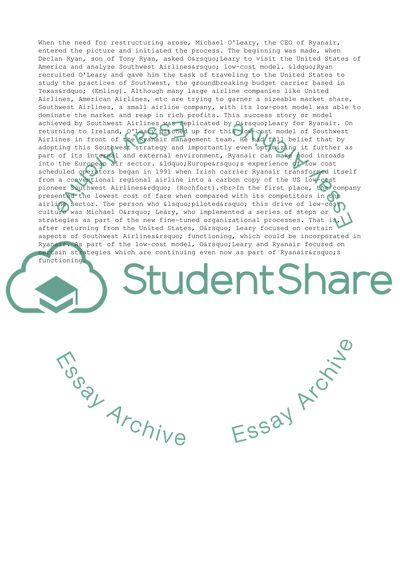Cite this document
(Strategic Management of Ryanair Case Study Example | Topics and Well Written Essays - 2500 words, n.d.)
Strategic Management of Ryanair Case Study Example | Topics and Well Written Essays - 2500 words. Retrieved from https://studentshare.org/business/1735950-strategic-business-planning
Strategic Management of Ryanair Case Study Example | Topics and Well Written Essays - 2500 words. Retrieved from https://studentshare.org/business/1735950-strategic-business-planning
(Strategic Management of Ryanair Case Study Example | Topics and Well Written Essays - 2500 Words)
Strategic Management of Ryanair Case Study Example | Topics and Well Written Essays - 2500 Words. https://studentshare.org/business/1735950-strategic-business-planning.
Strategic Management of Ryanair Case Study Example | Topics and Well Written Essays - 2500 Words. https://studentshare.org/business/1735950-strategic-business-planning.
“Strategic Management of Ryanair Case Study Example | Topics and Well Written Essays - 2500 Words”, n.d. https://studentshare.org/business/1735950-strategic-business-planning.


